Favorite CollLection Triceratops Real Figure Keyring
$11.95
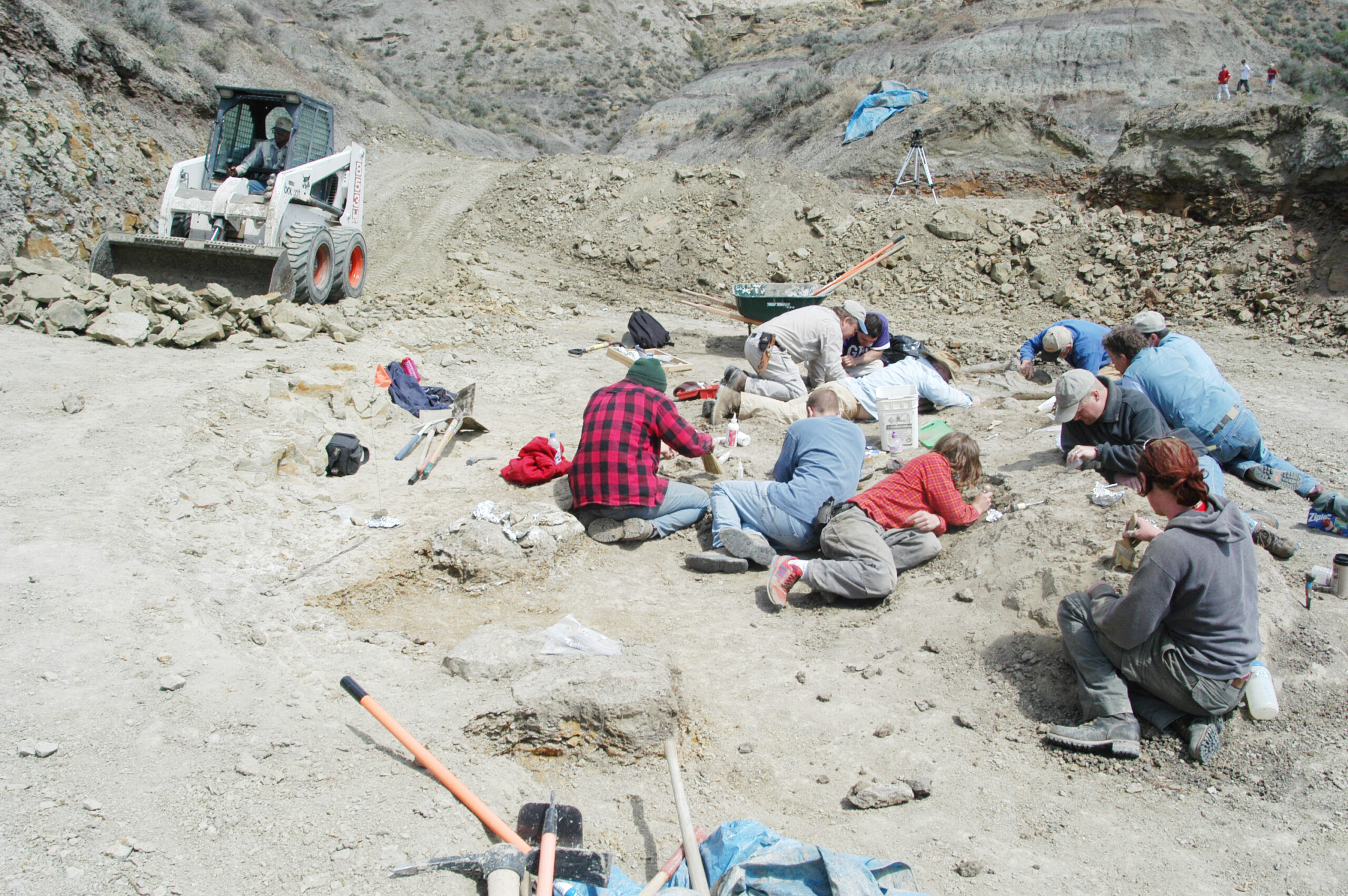
The Institute staff includes trained geologists and paleontologists who are experienced in the identification of both vertebrate and invertebrate faunas. Clues can be elusive: from small fragments at the bottom of a cliff or a tiny section of bone protruding from the surface, to a large area littered with bone. It is important when searching for fossil remains to ‘know where you are’ and be certain that you have the permission of the landowner to be there. The Institute maintains a large file of maps, especially of our region, to check on the precise coordinates of each site, and then verifies ownership at the appropriate courthouse. Over the years, BHI has developed numerous new techniques and discovered new products that make fossil discovery and collecting more efficient and effective. This is especially true for surface collecting where fossil remains may be scattered or extremely fragile. Surface pieces are sometimes mapped, identified (if possible), stabilized with preservatives, wrapped, and labeled.
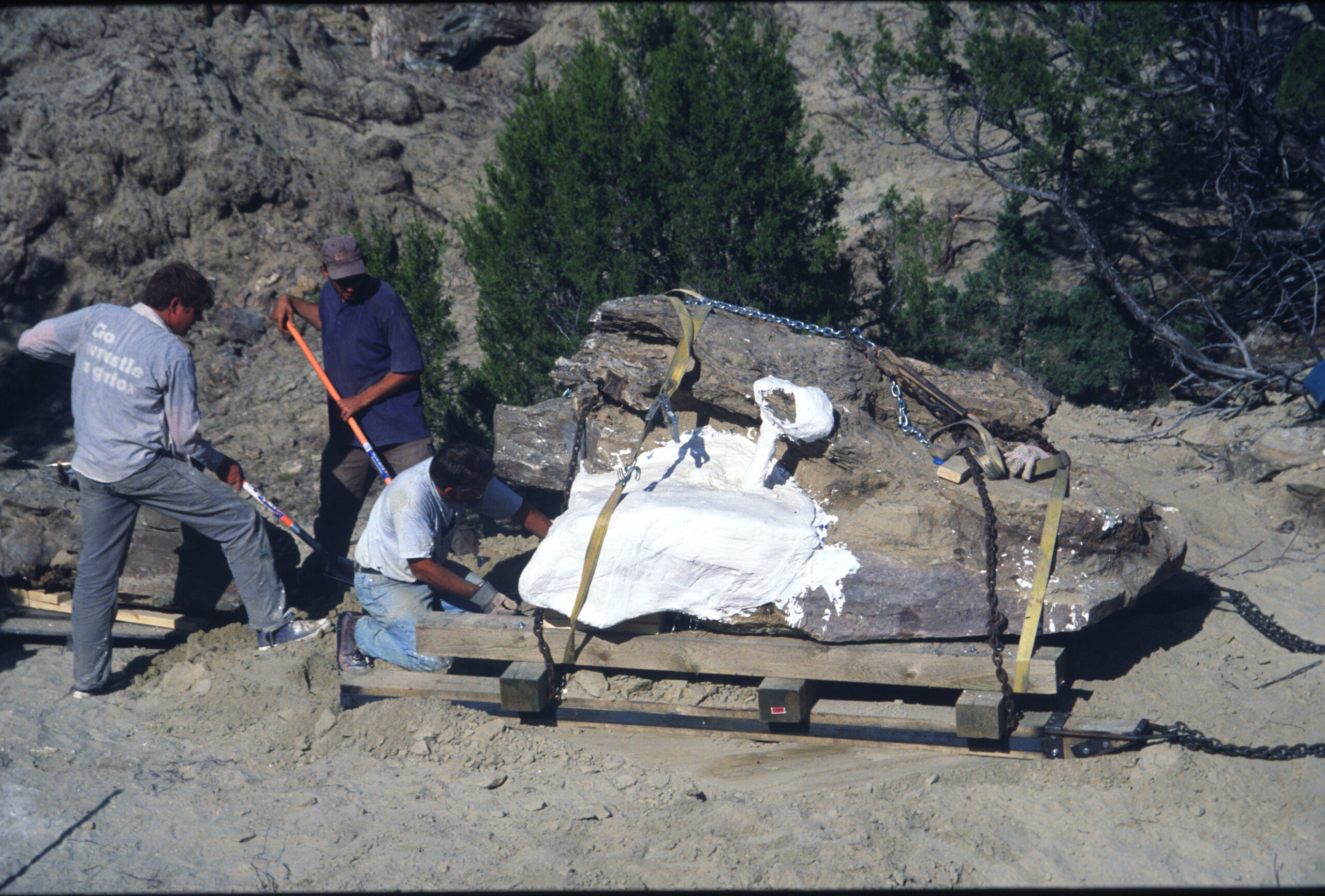
Black Hills Institute uses an assortment of tools to excavate fossil remains. Each tool may have a specific use, or a variety of uses, at different stages of collecting activity. Power tools are used sparingly to avoid risk of damaging fossil material. However, tools like jackhammers and small loaders are sometimes essential in the excavating of fossils. A small loader which is powerful enough to remove tons of overburden (layers of dirt and rock) can, with the right person at the controls, also be gentle enough to find bones when the need calls for it .
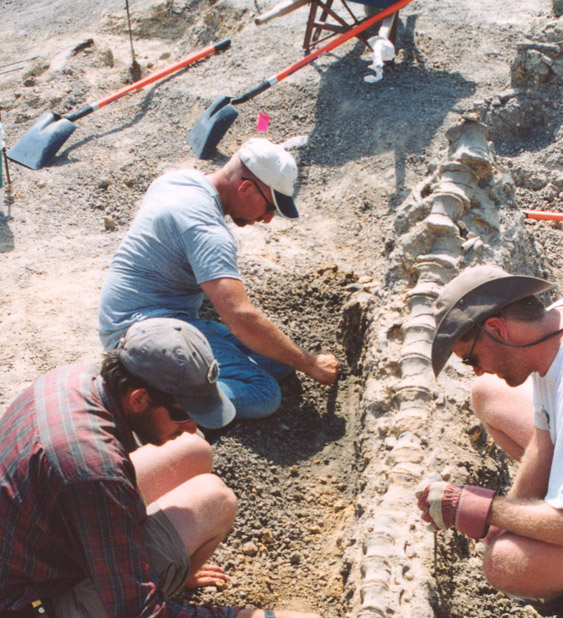
At the excavation site, the Institute uses Estwing brand picks and rock hammers, shovels, survival knives, X-acto® knives, and brushes. Picks and shovels are used to reduce the overburden to a minimum, large knives are utilized to go through the sediments in search of bones, and small knives and brushes are then used in the final uncovering and cleaning of the fossil. Brushes and brooms are also used to maintain a clean digsite to make it easier to locate the fossils during excavation.
Once the fossil is exposed, our staff applies glues and preservatives as necessary to ensure that the bone stays together and to stabilize the fossil for transport to a storage area or the laboratory. Black Hills Institute has experimented with all types of adhesives and consolidants in the quest to find the best glues and preservatives for all types of fossils. Cyanoacrylate glues (Paleo Bond™ brands are great), although reversible, should be used sparingly when possible, yet they should be used generously when the fossil is fractured and the pieces are in the right place. For field collecting of porous bones and extremely fractured fossils, a combination of Paleo Bond™ penetrant and PVA (polyvinyl acetate) will hold them together and keep them from absorbing moisture. PVA is even used to stabilize fossil material that may be left in the field until the next field season.
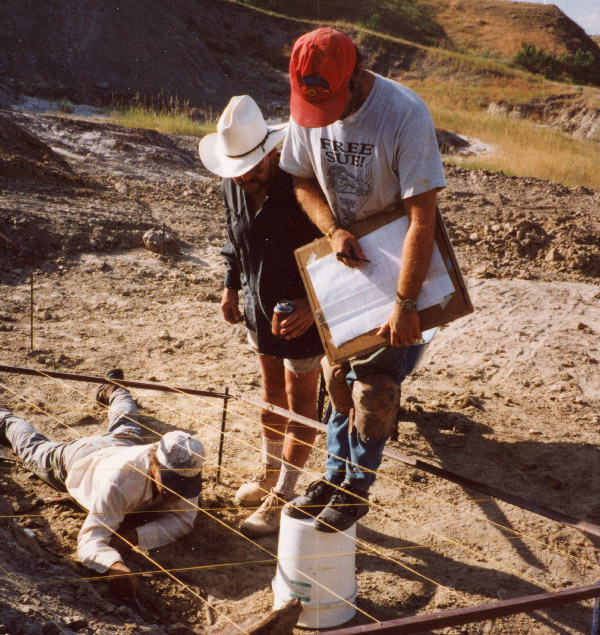
One of the first steps at any dig site is establishing the mapping and documentation procedure. Black Hills Institute takes great care in recording the fossil material that is discovered and collected at each site. A large portable grid is used to help map the site. The Institute also takes numerous photographs, does video documentation, draws sketches, and records field notes to ensure that the maximum amount of information is retained from each excavation site.
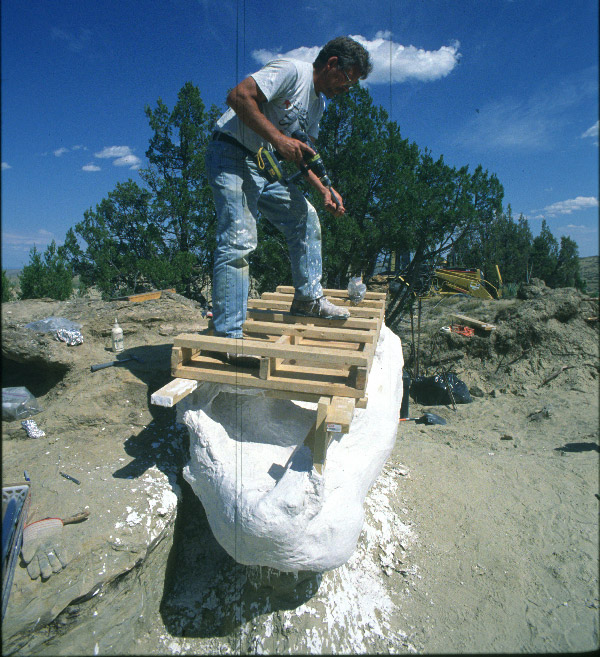
During excavations of vertebrate skeletons, large bones and sections of skeletons are covered in foil and cast with plaster bandages and plaster to provide protection and rigidity until preparation. The smaller pieces are often carefully wrapped in aluminum foil packages. Each cast and package carries the date of excavation and the specimen identification number.
It is essential to minimize vibrations when transporting fragile fossils from the excavation site to the storage area. It is important to ensure that all parts from each specimen are stored together. The storage area needs to be clean and dry, since the primary cause of damage to fossils after excavation is moisture. Fossils that are as moisture free as possible before storage will remain in excellent condition for a very long time.